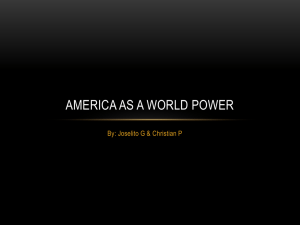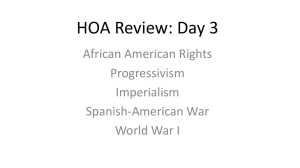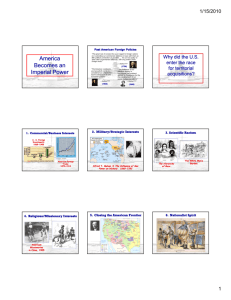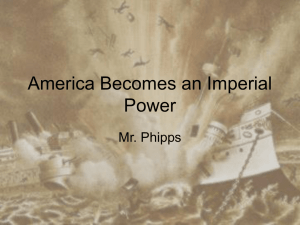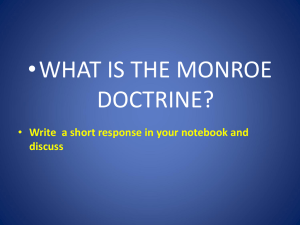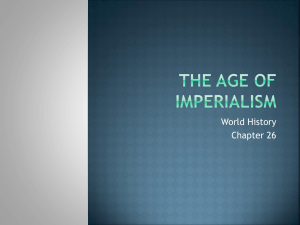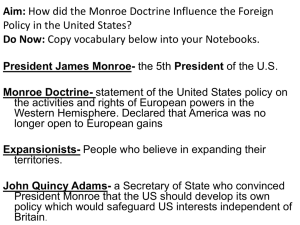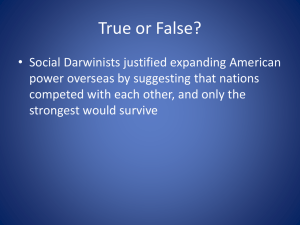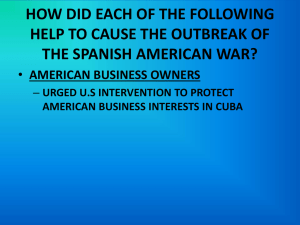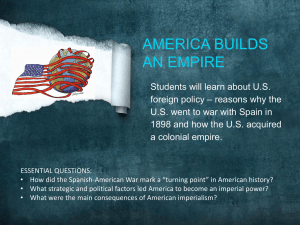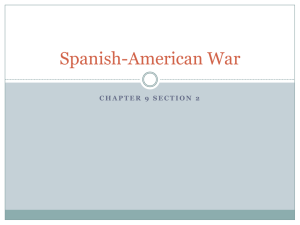Presidential Policies Monroe Doctrine
advertisement
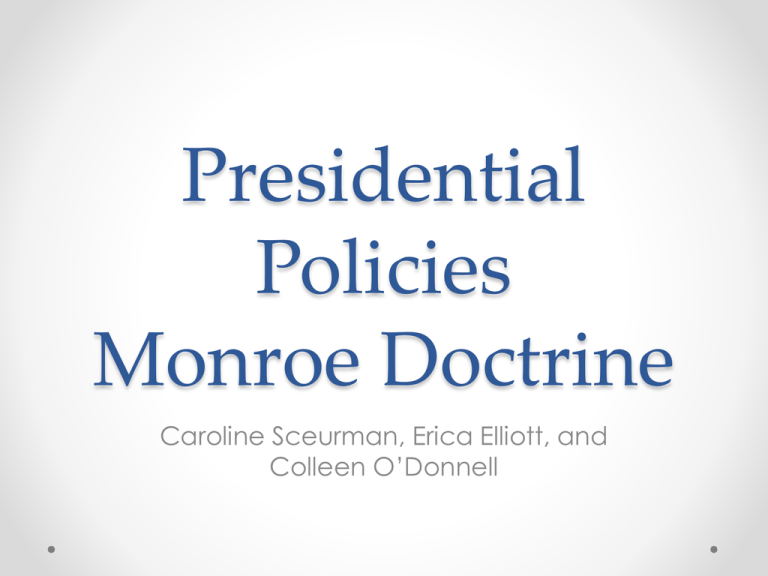
Presidential Policies Monroe Doctrine Caroline Sceurman, Erica Elliott, and Colleen O’Donnell Political Cartoon #1 Explanation of Image This political cartoon shows how America was trying to strictly enforce the Monroe Doctrine of 1823 during the Imperialistic Era. Uncle Sam represents America’s values of liberty. The wall in the cartoon represents the “wall” between Europe and Latin America. Time Frame and President 1865-1914 • Andrew Johnson (1865-1869) • Ulysses S. Grant (1869-1877) • Rutherford B. Hayes (1877-1881) • Chester Arthur (1881-1885) • Grover Cleveland (1885-1889) (1893-1897) • Benjamin Harrison (1889-1893) • William McKinley (1897-1901) • Theodore Roosevelt (1901-1909) • William Howard Taft (1909-1913) • Woodrow Wilson (1913-1921) Causes of Interaction European countries were trying to colonize and expand their countries into parts of North and South America, violating the United State’s Monroe Doctrine. 1. Venezuela and British colony of Guiana 2. Panama and Columbia 3. Spain and Cuba Effects of Interaction The violations of the Monroe Doctrine forced the United States to get involved. 1. President Grover Cleveland forced Great Britain to settle the boundary dispute between Venezuela and the British Colony of Guiana by threatening military action. 2. President Theodore Roosevelt supported a revolt in Panama against Columbia with US military aid. Columbia lost control of Panama and the US were able to build the canal. 3. President William McKinley started the SpanishAmerican War to get Cuban independence from Spain. Spain lost the war and their control of Cuba. The US gained the Philippines. Value The political cartoon helps us to understand how adamant the United States was about keeping European nations out of North and South America. The cartoon shows that society believed that the United States was a world power and that the Monroe Doctrine was going to be strictly enforced. Limitations If we only had this source, one may be led to believe that the United States was overstepping the boundaries of the Monroe Doctrine and therefore separating themselves from the rest of the world. The United States territorial expansion was a proper and legitimate policy to follow the turn of the nineteenth century only to a small extent because the Monroe Doctrine prohibited the expansion of European countries yet America continued to expand by gaining lands of the countries that they had helped. For example, The Philippines from Cuba, the Panama Canal territory from Columbia, etc. Political Cartoon #2 Explanation of Image This political cartoon portrays the positive effect the United States’ position in the Spanish-American War had on the Spanish colonies of the time. The top picture represents the burdens each country faced before US influence. The bottom picture represents how the US “rescued” each country from their burdens. Time Frame and President 1898-1901 William McKinley (1897-1901) Causes of Interaction The United States supported the freeing of the oppressed people controlled by the Spanish 1. Philippines 2. Hawaii 3. Puerto Rico 4. Cuba 5. Isthmus of Panama/Panama Canal Zone Effects of Interaction The Treaty of Paris (1898) ended the Spanish-American War and changed the status of these Spanish colonies. 1. The Philippines was annexed by the United States, who would “educate and Christianize” the Filipinos until they were ready for self-government. 2. United States’ annexed Hawaii as a “naval base” 3. United States’ acquisition of Puerto Rico ended Spanish presence in the western hemisphere. 4. Cuba independent from Spain, with the intention that US occupation forces would leave Cuba to become a free nation 5. Panama Canal construction Value The political cartoon helps to understand the role of the United States in helping each Spanish colony gain independence following the Spanish-American War, and how successful that role was. Limitations This political cartoon is titled “What The United States Has Fought For.” This title, along with the pictures, could lead one to believe that the main reason the US fought the SpanishAmerican War was to gain the independence of the Spanish colonies. The real reason was to gain overseas colonies which would provide raw materials for home industries, military bases to expand and protect US overseas trade, and so forth. The United States territorial expansion was a proper and legitimate policy for the United States to follow at the turn of the nineteenth century to a fairly large extent because the United States’ motivation for fighting the Spanish-American War benefited not only the United States, but the Spanish colonies as well.
